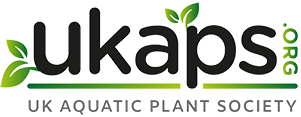Hi all,
Long time user of seachem prime here, I had the 1L bottle that has lasted me years! Obviously its a great product but is there an alternative? Just curious that's all.
I have a 300L tank that's now been running about 6 years so its super mature! Not sure if that makes a difference?!!
Just interested to hear some opinions or options
Cheers, James
It really has nothing to do with the size or maturity of a tank. It’s about ensuring fish and other livestock are not exposed to any chlorine.
I’m not sure what the maximum allowed levels in tap water are outside North America. But here the maximum is 4ppm.
When chlorine comes in contact with organic matter it causes cell damage which is reasonably quickly fatal to microorganisms but larger organisms - like us & fish too, need longer contact times to be harmed.
Fish exposed to chlorine long enough are likely to show signs of breathing trouble first, such as gasping at the surface. There can be neurological symptoms such being unable to maintain normal swimming posture or necrosis in the gill tissues.
Or a fish may simply die suddenly.
If you do a big water change and forget the dechlorinator, you won’t see anything untoward happen right away.
Look at instructions for using bleach water to disinfect surfaces as an example. They all say the surface must be clean first - no dirt or grease can be present because it interferes with direct contact of chlorine & organisms.
Then once the bleach water is applied, the surface must remain wet for at least ten minutes in order for the solution to have the desired effect.
Technically speaking, in a lot of tanks you could add a few litres of water that isn’t dechlorinated and have nothing noticeably bad happen to the fish - it will get oxidized by microorganisms before it’s been there long enough to damage the fish.
But dechlorinators aren’t a huge expense and I very strongly favour the ‘better safe than sorry’ approach when it comes to their use.
There are other brands similar to Prime but only one that I am aware of which is as concentrated as Prime.
Seachem Safe is much more concentrated because it’s a dry powder but dosing it accurately for water volumes in the average aquarium is rather inconvenient because it is so concentrated. One has to measure doses of mere milligrams.
Seachem says you can’t mix up a batch of Safe to use as you would you use Prime because it won’t last, which might be true or possibly just self serving.
But why risk plants and fish you care about?


